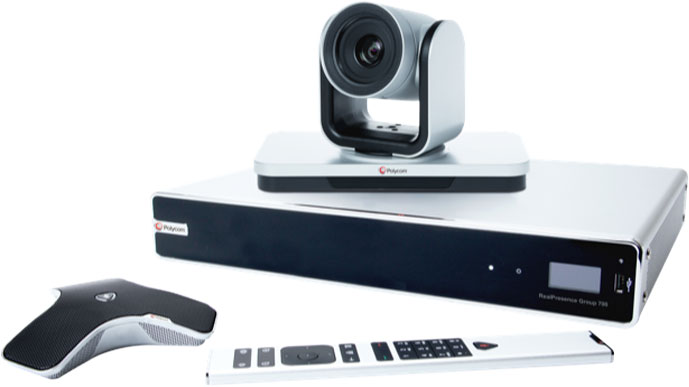The move to a remote working model has been rapid and dramatic. In a few short years, the concept of remote work has gone from something available to a few, to a new normal. Businesses now have to adapt to successfully manage remote teams.
Disruptive changes like this always drag plenty of challenges along with them. And this is no different. The benefits are enormous for businesses that face these challenges. At THINK, we have the tools and expertise to seamlessly enable remote working.
As part of our commitment to helping businesses thrive in the age of remote working, we have created this guide on how to successfully manage a remote team.
The Challenges of Managing a Remote Team
Remote working always seemed like the vision of a “utopic” future. But, although there are distinct advantages to remote or hybrid working, there are also unique and demanding challenges that need addressing.
Below are just a few of the challenges facing managers and staff as they adapt to the new way of working.
- We are Social Creatures – Humans have evolved to live, work, and play in social groups. Once the “novelty” of remote working wears off, workers can be left feeling isolated and lonely.
- Setting Boundaries – Arriving and leaving the office every day set a clear delineation between home and work life. With this boundary removed, the danger is that many people end up working longer hours, and this adds to stress levels and, in some cases, complete burnout.
- Distractions – Working from home subjects people to distractions that are not present in the workplace.
- Reduced Access to Information – If not managed correctly, working practices can suffer because staff do not have access to necessary information. The workplace makes it easy for staff members to discuss ideas. Many times, this happens during informal chats and other engagements. This is often neglected with remote working.
Tips to Help Successfully Manage a Remote Team
Rising to meet the challenges of remote working is something that we need to tackle head-on. But the rewards are plain to see. There are definite advantages to a remote or hybrid working model. When implemented correctly, these advantages can easily outweigh the downside of remote working.
Here are some tips to help managers address the challenges of a remote workforce.
1. Set up Daily Check-ins
This can seem like an unnecessary burden for all involved. However, a daily check-in can serve several purposes that can alleviate some of the issues faced with a remote working model.
For starters, setting up a daily “informal” remote video conference can replace the ad-hoc chats and meetings that are important for teams to function properly. Whilst there should be some structure to these check-ins, be sure to leave some scope for team members to chat informally.
2. Communication is Key!
One thing that remote working has shown is that despite the proliferation of electronic communication, we still work best when in a group. However, even in traditional working environments, good communication could be hard to achieve. This problem is exacerbated with a remote or hybrid workforce.
For remote workforces, there is no such thing as over-communication. Use daily check-ins or other mechanisms to ensure that every member of the team knows their tasks, desired outcomes, and responsibilities.
3. Make the Most of the Technology
Without the technology that was already at our fingertips, the move to a remote working model would have been impossible. But it is also true that many of us are still not utilising anywhere near the full potential of the available technologies.
There are many tools and audio-visual solutions available to help with remote working. Used to their fullest potential, these can smooth the path to an efficient and happy remote workforce.
4. Set Up Communication Rules
One example of a communication rule could be the daily check-in. But this needs to be reinforced with a set of rules that establish communication protocols. Included in these “rules of engagement” could be factors like:
- Mechanism – For instance, we use videoconferencing software for group meetings, email for less urgent communications, and IM software for critical and time-sensitive communications.
- Timing – There can be set times for specific items like the daily check-in. But also you could establish expectations of when particular staff members are best contacted.
- Boundaries – Is it acceptable to IM someone at 9.00 pm? This one goes back to the line between home and work life. Making sure everyone knows what is acceptable is a critical factor.
- Inclusion – It is easy for workers to feel outside the communication loop. Whatever communication rules you implement, remember to make sure they do not leave employees feeling excluded.
5. Forget About Micro-Managing
Micro-managing is never a good thing, but it becomes almost impossible when dealing with a remote workforce. Take the opportunity to become more “outcome-focused” and less “activity-focused.” This can help build a team culture and ethos that works effectively as a team while allowing individuals the freedom to flourish.
Start by defining the goals and expected outcomes that you expect from each employee. Allowing the individuals to draw up a plan of action to achieve the said results is rewarding for the employee and places less stress on the team as a whole.
6. The Right Tool for the Right Job
It is unreasonable to expect employees to embrace the move to remote working if they are not furnished with the right tools for the job. For teams to function at their full potential IT budgets must be amended to reflect this. More emphasis needs to be placed on:
- Ensuring each team member has “fit for purpose” laptops
- Quality Wi-Fi is available
- Headsets and microphones
- Quality webcams
- Software that is designed to facilitate remote working
7. Remember to Listen!
It is easy when dealing with a remote team to forget the human aspect of what we do. The human side of the job is easier when working face-to-face. When we meet people daily, we have a feel for if something is wrong or if a staff member is troubled. We can see their attitude, their mood, and their demeanour. All this can be lost in a remote working situation. In fact, one study by the Harvard Business Review concluded that remote workers feel shunned and left out.
The latter fact demonstrates the importance of replacing the social interactions of the workplace with a virtual replacement. This is where THINK’s videoconferencing expertise and use of the latest tools and equipment can make a massive difference.
Thinking of Video Conferencing? THINK Makes It Easy
By facilitating easy and versatile communication between teams, customers, and other parties, our video conferencing solutions are tailored to make sure you always have the right tools for the job.
Our secure, reliable, and flexible solutions are easy to use and have measurable results in boosting productivity.

Our tailored video conferencing solutions include:
- User-friendly interfaces: Our video conferencing solutions are designed with intuitive interfaces, making it easy for users to navigate and participate in virtual meetings.
- High-definition audio: By utilising top-tier audio technology from brands like Sonos and Poly, we deliver crystal-clear sound quality, ensuring every participant can be heard with clarity.
- Cutting-edge video quality: With partnerships with renowned brands such as Sony and LG, we offer video conferencing solutions that provide high-definition video output, enabling lifelike visuals and enhancing the overall meeting experience.
- Reliable connectivity: Our solutions integrate seamlessly with platforms like Zoom and Microsoft Teams, leveraging their robust infrastructure to deliver stable and reliable connections for uninterrupted virtual collaboration.
- Customisable solutions: We understand that each organisation has unique requirements, so we offer flexible solutions that can be tailored to meet specific needs, ensuring a personalised video conferencing experience.
- Enhanced productivity: By providing top-of-the-line hardware and software solutions, we optimise virtual interactions, fostering productivity and efficient communication among remote teams.
At THINK, our expertise can elevate your remote team management to new levels. By facilitating easy communication across multiple channels, we bring remote teams together to boost productivity and enhance staff welfare. Call us today to find out more about how we can help you successfully manage a remote workforce.

